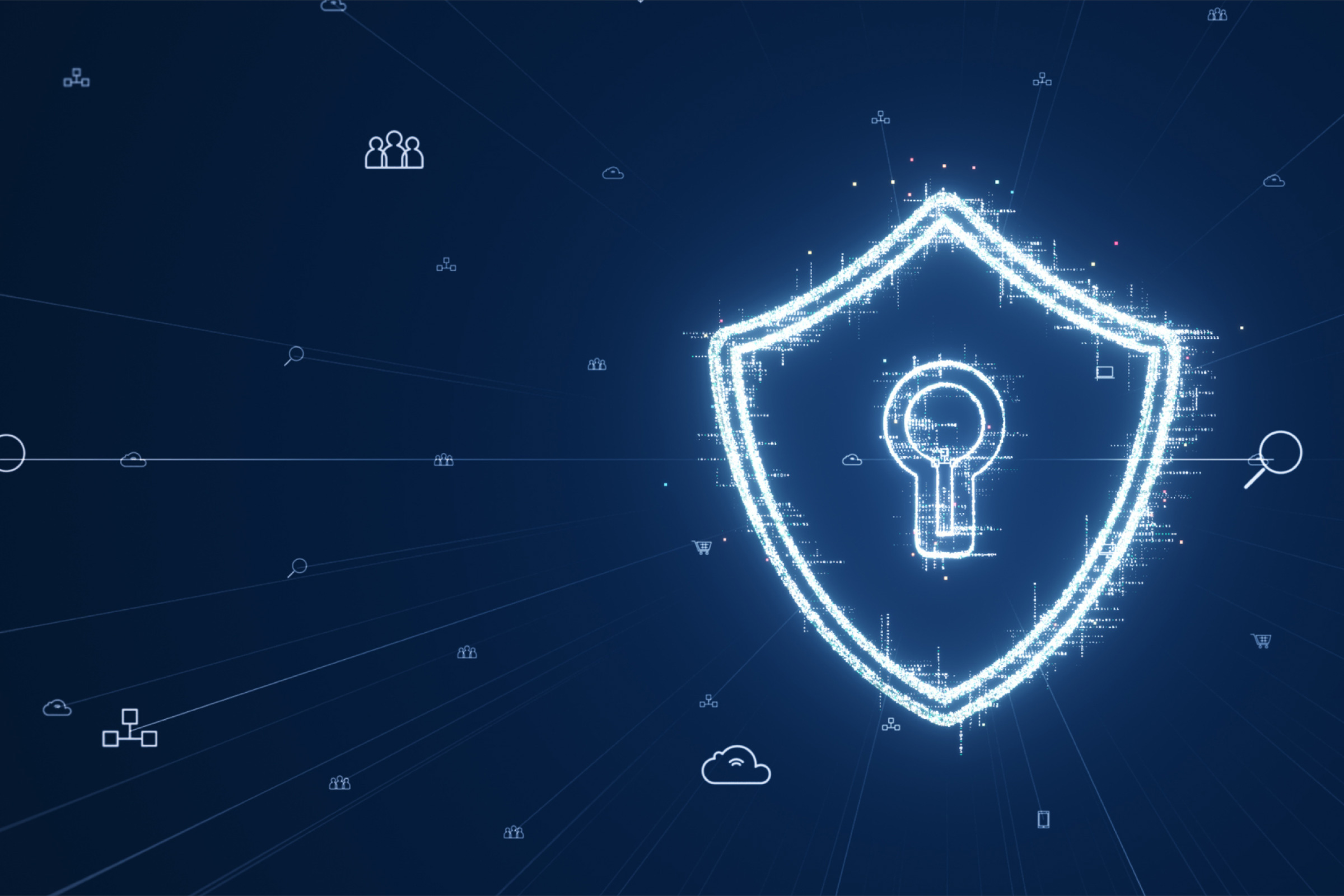What Is a Cyber Attack?
A cyber attack is an attempt by hackers to damage or disrupt a computer network or system. It involves using malicious code to alter computer code, logic, or data, resulting in disruptive consequences.
Cyber attacks may lead to data breaches, system shutdowns, or major security incidents. The threat landscape is continuously evolving as attackers find new techniques to breach systems, demanding proactive security measures from organizations.
Protection against cyber attacks requires understanding potential vectors and applying security policies and tools. Organizations must constantly anticipate risks and implement defenses to protect sensitive information. Ensuring system integrity and deploying timely updates are critical components in reducing technical vulnerabilities that can be exploited by cybercriminals.
Cyber Attacks: What Motivates Attackers?
There are several reasons for cyber criminals to carry out attacks.
1. Financial Gain
Cyber attacks motivated by financial gain are among the most common. Attackers ranging from solo hackers to organized crime groups seek to steal credentials, money or sensitive data that can be monetized. Techniques include phishing, ransomware, and banking trojans, which extract personal information or hold valuable data hostage.
The increasing digitization of financial services presents opportunities for attackers. Cyber criminals continuously refine their tactics to bypass security measures, stressing the need for organizations to improve their cyber defenses. Regular security training and implementation of multifactor authentication are crucial in combating financially motivated attacks.
2. Political or Ideological Motives
Cyber attacks often stem from political or ideological motives, with activists or hacktivists targeting entities to promote causes. These attacks aim to disrupt operations or spread propaganda, impacting organizations, governments, and public opinion. Notable techniques include website defacements and distributed denial-of-service (DDoS) attacks, which seek publicity and draw attention to certain issues.
Such ideologically driven attacks often possess dual objectives: achieving technical disruption and gaining media exposure. The complexity and stealth of these operations make them challenging to prevent. Organizations must undertake diligent monitoring and maintain an informed posture on current ideological trends and potential threats to mitigate these risks.
3. State-Sponsored Actors
Nation-state actors execute cyber attacks to gather intelligence, influence geopolitical events, or gain economic advantages. These campaigns involve advanced persistent threats (APTs) that exploit zero-day vulnerabilities, reflecting resources and strategic objectives. State-backed cyber teams meticulously target entities to extract sensitive data, compromising national security in some instances.
State-sponsored attacks pose severe challenges due to their prolonged and stealthy nature. Defense against these threats demands a concerted effort from multiple national security agencies, leveraging collective expertise, threat intelligence, and collaboration. Understanding the motivations and techniques used by these malicious actors is vital for devising countermeasures.
4. Insider Threats
Insider threats involve individuals within an organization misusing their access to digital systems and sensitive data, either maliciously or inadvertently. These threats can result in data manipulation, system damage, or unauthorized access to confidential information. As insiders have legitimate access, detecting such threats can be particularly challenging.
Mitigating insider threats necessitates a strategy focusing on strict access controls and regular employee training. Establishing clear policies on sensitive data handling, alongside implementing continuous security monitoring systems, can help detect suspicious activities early. Cultivating a security-aware culture within organizations also aids in minimizing risks associated with insider threats.
Common and Emerging Cyber Attack Techniques
Cybersecurity strategies must take the following techniques into account.
Malware, Ransomware, and Rootkits
Malware encompasses a variety of malicious software, including ransomware and rootkits, designed to harm or exploit systems. Ransomware encrypts data, demanding payment for its release, while rootkits provide remote access, masking intrusions. These attacks can lead to financial losses and operational disruptions, emphasizing the need for antivirus defenses and regular system updates.
Cyber criminals continuously evolveimprove malware to evade threat detection, employing polymorphic and fileless techniques. Organizations must adopt layered security measures, such as endpoint protection and behavior-based detection, to combat these threats. Regular training and awareness also allow employees to identify potential malware before execution.
Phishing and Account Takeovers
Phishing scams trick individuals into revealing sensitive information via deceptive communications. Malicious actors craft convincing emails or messages to steal credentials and access accounts, leading to unauthorized transactions or data breaches. Account takeovers often follow successful phishing attempts, allowing attackers full control over victim accounts.
Countering phishing requires technical solutions like email filtering and multifactor authentication, paired with user education on recognizing phishing attempts. Organizations must foster a security-first mindset, encouraging employees to scrutinize incoming communications and report suspicious activities. Implementing an incident response plan can mitigate damage should an account takeover attack occur.
Denial-of-Service Attacks
Denial-of-service (DoS) attacks aim to incapacitate a system by overwhelming it with traffic. Distributed denial-of-service (DDoS) attacks amplify this by leveraging compromised devices to generate excessive requests, disrupting services. Such attacks can degrade performance, resulting in downtime and potential financial losses.
Preventing DoS and DDoS attacks necessitates scalable network infrastructures capable of handling unexpected traffic spikes, alongside application-layer defenses to block attacks that exploit software vulnerabilities and logic flaws.
Techniques such as rate limiting and web application firewalls (WAFs) can help manage traffic and prevent malicious inputs and other manipulation attempts. Leveraging cloud-based DDoS protection services can also absorb traffic surges, ensuring systems remain operational under attack.
Man-in-the-Middle Exploits
Man-in-the-middle (MitM) attacks intercept and alter communications between two parties without their knowledge. Attackers exploit unsecured computer networks or vulnerabilities to eavesdrop, capturing or injecting data. This allows for unauthorized data access and manipulation, posing significant cyber security risks.
Securing communications with end-to-end encryption and employing secure protocols like HTTPS are crucial to thwarting MitM attacks. Organizations must ensure network configurations prevent unauthorized access and maintain strict certificate management policies. User vigilance in recognizing abnormal network behaviors also aids in early threat detection and response to MitM exploits.
Injection Attacks
Injection attacks occur when malicious data is introduced into a program via unsanitized inputs, exploiting security flaws to alter or extract data. SQL injection attack is a common variant that targets databases, accessed through vulnerable web applications, compromising data integrity and confidentiality.
Defending against injection attacks involves implementing input validation and using prepared statements or stored procedures. Organizations must consistently audit their codebases for vulnerabilities and ensure that security patches are promptly applied. Educating developers on secure coding practices further strengthens defenses against injection threats.
Zero-Day Vulnerabilities
Zero-day vulnerabilities are undiscovered software flaws exploited before developers can issue patches, posing substantial risks due to their unpredictability. These vulnerabilities are prime targets for attackers seeking to infiltrate systems without detection. The immediate risk of sensitive data theft and system breaches underscores the need for agile response strategies.
Organizations must adopt proactive vulnerability management, employing tools that detect anomalies indicative of zero-day exploits. Collaboration with security researchers and participation in threat intelligence sharing improves preparedness. Implementing an incident response plan ensures rapid deployment of mitigative measures.
DNS Tunneling and Spoofing
DNS tunneling and spoofing manipulate domain name system protocols to exploit query data for malicious activities. DNS tunneling transmits information through DNS queries, which can bypass security systems, while DNS spoofing redirects users to fraudulent sites, risking data theft or malware injection.
Mitigating DNS-based attacks involves deploying DNS security extensions (DNSSEC) to ensure the authenticity of DNS data. Employing DNS filtering and monitoring tools can detect and block unusual activity. Maintaining up-to-date threat intelligence on DNS vulnerabilities also aids in preemptive defense, reducing exposure to spoofing and tunneling exploits.
Supply Chain Attacks
Supply chain attacks target vulnerabilities within an organization’s supply chain, exploiting trusted relationships to infiltrate networks. Compromising suppliers or third-party services enables attackers to deliver malicious code or hardware into an otherwise secure environment. Such attacks can lead to operational and reputational damage.
Protecting against supply chain attacks requires vetting of suppliers and regular security audits. Implementing access controls and employing intrusion detection systems improve cyber security within interconnected systems. Building transparent communication channels with partners ensures prompt awareness of security events, enabling coordinated responses.
Cryptojacking
Cryptojacking involves unauthorized use of computer resources to mine cryptocurrencies, typically occurring without user knowledge. Attackers inject mining scripts into websites or legitimate software, exploiting processing power, which can diminish system performance and increase energy costs.
Detecting cryptojacking demands monitoring for abnormal system behaviors and employing browser extensions to block malicious scripts. Regular system updates and patching close vulnerabilities that can be exploited for cryptojacking. User education on safely navigating the web and avoiding suspicious downloads mitigates risks, protecting against mining operations.
Tips from the Expert

Rob Gurzeev, CEO and Co-Founder of CyCognito, has led the development of offensive security solutions for both the private sector and intelligence agencies.
In my experience, here are tips that can help you better defend against cyber attacks and outpace modern threats:
- Use deception technology to trap and profile attackers: Deploy honeypots, honeytokens, and decoy login credentials across the network and cloud environments. These alert teams to intrusions early and reveal attacker tactics, techniques, and procedures (TTPs) with low false-positive rates.
- Adopt continuous purple teaming over periodic testing: Instead of relying solely on annual red team or pen test exercises, implement continuous purple teaming that evolves in tandem with threat landscapes. Regular iterative collaboration between offensive and defensive teams improves detection and response capabilities in real time.
- Integrate OSINT and dark web monitoring for early warning: Proactively monitor for signs of targeting, leaked credentials, or cloned infrastructure using threat intelligence from public sources and underground forums. This improves threat anticipation, especially before campaigns go live.
- Track and limit long-lived API tokens and secrets: API keys and secrets often bypass traditional identity controls and are frequent targets in supply chain attacks. Rotate secrets frequently, enforce short expiration policies, and use tools like HashiCorp Vault or AWS Secrets Manager to reduce static exposure.
- Instrument custom-built software with runtime security controls: In-house applications are often overlooked. Embed security hooks via instrumentation (e.g., OpenTelemetry + eBPF) or deploy Runtime Application Self-Protection (RASP) to detect and block exploits during execution, particularly against injection and deserialization attacks.
Examples of Recent High Profile Cyber Attacks
MOVEit Data Breach
In May 2023, Progress Software’s MOVEit Transfer, a widely used managed file transfer solution, was found to have a critical SQL injection vulnerability (CVE-2023-34362). This flaw was exploited by the CL0P ransomware group, also known as TA505, to deploy a web shell named LEMURLOOT on internet-facing MOVEit Transfer web applications.
The web shell enabled unauthorized access to underlying databases, leading to significant data theft. The data breach affected over 2,700 organizations and exposed the personal data of approximately 93.3 million individuals across various sectors, including healthcare, finance, and government.
Anonymous Sudan’s DDoS Attacks
Since early 2023, the hacktivist group Anonymous Sudan, led by Sudanese nationals Ahmed Salah Yousif Omer and Alaa Salah Yusuuf Omer, conducted over 35,000 distributed denial-of-service (DDoS) attacks. Their targets included hospitals, government agencies, and various organizations worldwide.
Notably, in September 2023, they launched a week-long DDoS attack against Kenya’s internet infrastructure, disrupting government services, banks, universities, and at least seven hospitals. In October 2024, U.S. authorities indicted the Omer brothers for their involvement in these cyberattacks.
Medusa Ransomware Campaign
The Medusa ransomware group has been active since early 2023, with a significant increase in attacks between 2023 and 2024. By early 2025, they had claimed nearly 400 victims, including organizations in critical infrastructure sectors such as medical, education, legal, insurance, technology, and manufacturing.
Medusa employs double extortion tactics, exfiltrating sensitive data before encrypting systems and demanding ransoms ranging from $100,000 to $15 million. They exploit known vulnerabilities, particularly in Microsoft Exchange Server, and use remote management tools like SimpleHelp, AnyDesk, and MeshAgent to maintain persistence within compromised networks.
Scattered Spider’s Casino Hacks
In September 2023, the criminal group Scattered Spider, also known as UNC3944, targeted MGM Resorts International. They used social engineering tactics, including phishing and vishing, to gain unauthorized access to MGM’s computer systems.
The targeted cyber attack resulted in operational disruptions, such as disabling online reservation systems, digital room keys, slot machines, and websites across MGM’s 31 resorts. The group claimed to have stolen 6 terabytes of data during the attack. MGM began restoring their systems on September 14, 2023, and confirmed full restoration by September 20, 2023.
XZ Utils Backdoor Incident
In February 2024, a backdoor was introduced into the XZ Utils data compression utility, specifically within the liblzma library versions 5.6.0 and 5.6.1. The malicious code was added by a contributor using the alias “Jia Tan.”
This backdoor allowed attackers with an Ed448 private key to execute remote malicious commands via OpenSSH, posing a severe security risk. The backdoor was discovered in March 2024 before it could be widely exploited, underscoring the importance of vigilance in software supply chain security.
Key Cyber Attack Detection and Prevention Technologies
There are several types of tools that can help identify and block cyber attacks.
1. Firewalls and Web Application Firewalls
Firewalls act as gatekeepers between trusted and untrusted networks, enforcing access control policies by inspecting incoming and outgoing traffic. Traditional network firewalls filter traffic based on IP addresses, ports, and protocols. They are effective at blocking unauthorized access, but have limited visibility into application-layer cybersecurity threats.
Web application firewalls (WAFs) are designed specifically to protect web applications by filtering and monitoring HTTP/S traffic. They defend against common web attacks like SQL injection attack, cross-site scripting (XSS), and remote file inclusion. Modern WAFs often include signature-based detection, behavior analysis, and bot mitigation. Some integrate with content delivery networks (CDNs) to reduce latency while providing edge-based protection.
Firewalls and WAFs remain foundational components of layered security, but they must be regularly updated and tuned to remain effective against evolving threats.
2. Intrusion Detection and Prevention Systems (IDPS)
Intrusion detection and prevention systems are deployed to monitor network or system activities for malicious behavior. They combine detection and response capabilities, identifying potential cyber threats and blocking or alerting on them in real time. Signature-based IDPS uses known patterns of malicious traffic, while anomaly-based systems build baselines of normal behavior and flag deviations.
IDPS can be network-based (NIDPS), monitoring traffic flowing across the network, or host-based (HIDPS), focusing on individual systems. They are especially effective against known exploits, port scans, and brute-force attempts. However, they require ongoing tuning to balance sensitivity and reduce false positives.
3. External Attack Surface Management (EASM)
External attack surface management focuses on discovering, monitoring, and reducing an organization’s publicly accessible assets that could be exploited by attackers. EASM tools continuously scan the internet for exposed infrastructure, domains, IP addresses, and applications tied to an organization—often uncovering shadow IT or forgotten assets.
These platforms help identify misconfigured services, outdated software, open ports, and other vulnerabilities before adversaries can exploit them. Many EASM solutions also track domain reputation, detect phishing attacks, and monitor for leaked login credentials or sensitive data.
By providing visibility into the organization’s digital footprint from an attacker’s perspective, EASM supports proactive risk reduction and informs vulnerability management and cyber incident response efforts.
4. Network Detection and Response (NDR)
Network detection and response tools continuously monitor network traffic for suspicious patterns. Unlike traditional tools that rely on known signatures, NDR leverages behavioral analytics and machine learning to detect deviations from normal activity, uncovering cyber threats like lateral movement, command-and-control communication, malicious software or data exfiltration.
NDR provides high-fidelity alerts with rich context, supporting proactive threat hunting and incident investigations. These tools often include packet capture and metadata logging, which help analysts reconstruct attacks. NDR complements endpoint and perimeter security by focusing on threats within internal networks, which are often missed by external defenses.
5. Extended Detection and Response (XDR)
Extended detection and response solutions integrate data from multiple security components—endpoint, network, server, identity, and cloud—into a unified detection and response framework. XDR aims to break down silos between security tools, offering a consolidated view of threats and enabling faster, more accurate investigations.
XDR uses machine learning, analytics, and automation to detect complex attack sequences across environments. By correlating events across different sources, it reduces alert fatigue and provides a clearer picture of attacker behavior. Many platforms also include guided workflows, playbooks, and automated response actions to help security teams triage and respond.
6. Security Information and Event Management (SIEM)
SIEM platforms centralize log and event data from across the IT environment—firewalls, servers, endpoints, applications, and more—for real-time monitoring, alerting, and forensic analysis. They use correlation rules, behavior analytics, and threat intelligence feeds to identify suspicious activities and potential incidents.
Modern SIEMs support machine learning-based anomaly detection, customizable dashboards, and automated alerting. They also assist in compliance, providing audit trails and reporting for standards like HIPAA, PCI DSS, and GDPR. However, effective SIEM usage depends on proper configuration, data normalization, regular rule tuning, and skilled analysts to interpret findings and manage alerts.
7. Cloud Native Application Protection Platform (CNAPP)
Cloud native application protection platforms provide an integrated set of security features designed specifically for cloud-native environments. CNAPPs combine capabilities such as cloud security posture management (CSPM), cloud workload protection (CWPP), and container security to secure applications across the development lifecycle and runtime environments.
These platforms offer visibility into misconfigurations, vulnerabilities, and compliance risks across cloud infrastructure, containers, and Kubernetes environments. They continuously monitor for cybersecurity threats and unauthorized changes in cloud resources and workloads, often leveraging agentless scanning and API integrations.
CNAPPs also help shift security left by integrating into CI/CD pipelines, allowing teams to detect issues early in the development process. Runtime protection includes anomaly detection, file integrity monitoring, and behavioral analysis to identify threats in real time.
Critical Best Practices for Cyber Defense
Here are some of the main ways that organizations can defend themselves against a variety of cyberthreats.
8. Regular Testing and Asset Discovery for External Attack Surface
Understanding and managing the external attack surface—the set of digital assets exposed to the internet—is crucial for preventing initial compromise. Regular testing and discovery help identify unknown or forgotten assets such as outdated applications, misconfigured cloud services, exposed APIs, and open ports that can be exploited by attackers.
Attack surface management platforms, external vulnerability scanners, and DNS enumeration can continuously map the organization’s perimeter. They identify shadow IT and monitor changes over time, providing alerts for newly exposed or modified services. Manual validation and contextual analysis help differentiate between critical exposures and benign findings.
Routine assessments should be integrated into the security workflow, especially after infrastructure changes, mergers, or cloud migrations. Findings must be prioritized based on risk and addressed promptly.
9. Integrating Penetration Testing
Penetration testing, or ethical hacking, involves security professionals simulating attacks to uncover vulnerabilities in applications, networks, and systems. Unlike automated vulnerability scanners, penetration tests provide insights into how real attackers might exploit weaknesses. This approach helps identify configuration errors, insecure business logic, and flawed access controls that could be missed by other tools.
Tests can be black-box (no prior knowledge), white-box (full knowledge), or gray-box (partial knowledge), depending on the assessment goal. They should be conducted regularly—at least annually—and whenever major infrastructure or application changes occur. Incorporating the findings into a remediation plan is essential, as is validating fixes with retesting.
10. Implementing Strong Access Controls
Strong access control mechanisms limit exposure by ensuring users can only access the data and computer systems necessary for their role. Central to this is the principle of least privilege, which restricts permissions to the bare minimum. Role-based access control (RBAC) simplifies management by assigning permissions to roles rather than individuals, which is especially important in large or dynamic organizations.
Multifactor authentication (MFA) adds a second layer of defense by requiring additional verification, such as a mobile app code or biometric scan. Organizations should also regularly review and audit access rights, particularly when users change roles or leave the organization. Privileged access management tools help secure and monitor administrative access.
11. Developing and Testing Incident Response Plans
An incident response plan (IRP) outlines structured actions to detect, contain, eradicate, and recover from cyber incidents. This document serves as a playbook for teams under pressure, reducing confusion and enabling timely decisions.
A complete IRP includes predefined communication templates, contact lists for internal and external stakeholders, legal and regulatory procedures, and technical containment steps. Testing the plan is just as important as creating it. Tabletop exercises simulate real-world attack scenarios, helping teams practice coordination and identify process gaps.
Lessons learned from exercises and actual incidents should feed back into plan updates. The IRP should also align with the organization’s broader business continuity and disaster recovery strategies to ensure operational resilience in the face of disruptions.
12. Managing Third-Party Risks
Third-party vendors, contractors, and service providers often integrate deeply with an organization’s systems and data flows, making them attractive targets for attackers. Managing this risk begins with due diligence: evaluating vendor security policies, certifications, and incident history before engagement.
Contracts should include clauses requiring security controls, breach notification timelines, and rights to audit. Post-onboarding, organizations should monitor third-party activities using access logs, endpoint telemetry, and behavioral analytics. Vendor risk assessments should be conducted regularly, especially for high-impact partners.
Tools such as third-party risk management platforms and continuous vendor monitoring services provide visibility into supplier security posture. Additionally, limiting third-party access through network segmentation and zero trust architectures helps reduce the blast radius if a partner is compromised.
13. Continuous Monitoring and Logging
Continuous monitoring involves observing computer system and network activities in real time to identify anomalies that may indicate a breach. Effective monitoring requires collecting data from across the IT environment—endpoints, servers, firewalls, cloud platforms, and applications—and analyzing it for patterns of compromise.
Centralizing this data into a security information and event management (SIEM) system enables correlation across sources and faster response. Logging must be comprehensive and consistent. Logs should capture authentication events, file changes, system errors, and configuration changes, among others.
Organizations should define alert thresholds and prioritize high-risk events for immediate review. Retention policies should meet compliance needs and support forensic investigations. Regular tuning of alert rules reduces false positives and ensures monitoring adapts to evolving threats.
14. Regularly Updating and Patching Systems
Patching is an often neglected component of cybersecurity. Attackers frequently exploit known vulnerabilities for which patches already exist. A disciplined patch management process ensures timely remediation of these flaws before they are exploited. This includes operating systems and third-party software, firmware, and embedded systems.
Effective patching requires maintaining an accurate inventory of all assets and their software versions. Critical patches should be deployed as soon as feasible, while others can follow a regular schedule. Testing patches in staging environments helps avoid downtime in production systems. Automated tools can accelerate patch deployment and provide visibility..
15. Educating and Training Employees
Employee mistakes, like clicking on phishing links or using weak passwords, are among the most common entry points for attackers. Regular security awareness training educates staff on recognizing threats and following secure practices. Topics should include phishing attacks, password hygiene, safe browsing, social engineering, and sensitive data handling.
Training should be interactive and role-specific, ensuring relevance and retention. For example, developers should receive secure coding training, while finance staff should focus on business email compromise (BEC) scenarios. Simulated phishing campaigns test employee awareness and reinforce learning. Employees should also be encouraged to report suspicious behavior.
Securing the Attack Surface with CyCognito
As cyber attacks grow more sophisticated, driven by advanced persistent threats, zero-day exploits, and supply chain intrusion, the ability to secure your external attack surface becomes a foundational requirement, not a luxury.
CyCognito gives security teams continuous, attacker-like visibility across all internet-exposed assets, including unknown subsidiaries, misconfigured cloud services, and forgotten infrastructure. This real-time intelligence closes critical gaps that traditional tools miss and enables faster informed response to evolving threats.
By combining external attack surface management (EASM), dynamic application testing, and continuous security validation, CyCognito helps organizations prioritize what’s truly exploitable and mitigate risk before attackers strike.
The result is a shift from reactive defenses to a proactive security posture—equipping defenders not only to stop current breaches, but to prevent future attacks entirely.












